February 13
1867: Brussels, Belgium begins to bury a river. Brussels has historically been a Dutch-speaking city, but the emphasis has shifted since the late 19th century and today it is mostly French-speaking. It was first settled when Saint Gaugericus built a chapel on an island in the Senne River around 580. The official founding of the city was in 979 when it was sanctioned by the Duke’s presenting relics to the chapel. The Senne was a major waterway at the time. For the Dutch speakers, it was called Zenne. The river grew ever more polluted as the city grew and presented health hazards to the citizenry. It became less navigable as it was filled with garbage and decaying organic matter (offal from butchering). It flooded frequently and usually displaced working class families who lived in the neighborhoods close to it.
There were many options for trying to fix the problem. Jules Anspach, the mayor of Brussels, selected a design by Léon Suys in which the river was covered and a series of grand boulevards and public buildings were erected on the new land. This plan faced a great deal of opposition for two major reasons. The first was cost; the second was the displacement of those same working class families who were often flooded out. These objections were overcome and a British company was contracted to implement Suys’s design. After a great deal of embezzlement and other issues, the government took control over the completion of the project.
The contracts for the project were signed in June 1866 and work began on this day. Part of that time was used to expropriate the first 1,100 houses so building could commence. There were to be two sewers built, one upriver and one down, in adjacent suburbs and 1.4 miles of the river was to be covered. There were to be two 20 feet wide tunnels made of bricks and running parallel to each other with two lateral drainage pipes taking waste water away from respective sides of the street. Brussels geology caused some issues but were not insurmountable and were less daunting than some engineers had feared. The embezzlement scandal also slowed construction. Finally, on November 30, 1871 the sluice gates were ceremoniously opened and the project was complete.
Over the next two years, the boulevards created by the project were opened to traffic. The four streets offered a more efficient way to travel into the lower town and helped to revitalize the area. Part of this was due to the plan to create public buildings to attract other investment. Suys had the Brussels Stock Exchange built there, a remarkable example of metallic architecture. It replaced the often unclean open air markets and attracted private investment into building there. The plan was successful in cleaning up the river and flooding issues in the city. Other areas were still stuck with a still polluted river and flooding. Later projects were instituted to help with these problems and it is hoped the Senne River will soon be purified.
For life and death are one, even as the river and the sea are one. – Khalil Gibran
What is a fish without a river? What is a bird without a tree to nest in? What is an Endangered Species Act without any enforcement mechanism to ensure their habitat is protected? It is nothing. – Jay Inslee
I know the joy of fishes in the river through my own joy, as I go walking along the same river. – Zhuangzi
You drown not by falling into a river, but by staying submerged in it. – Paulo Coelho
Edison Effect
February 13, 1880: Thomas Edison makes another discovery. Thermionic emission is the name for heat-induced flow of charge carriers (in physics, this is a particle that is free to move and carry an electric charge with it) from a surface or over a potential-energy barrier. Today, we know that the charge carriers can be electrons or ions but in older literature they are sometimes called thermions. The classic example of this is the emission of electrons from a hot cathode into a vacuum and it is also known as the Edison effect. The hot cathode can be a metal filament, as in a light bulb.
JJ Thomas identified the electron as a separate physical particle in 1897 so before that time, different words were used to describe the effect seen. In 1873, Frederick Guthrie in Britain initially reported on the phenomenon. It was rediscovered on this day by Edison while he was looking for the reason that a lamp element’s broke with uneven blackening. While working with incandescent lamps, Edison built several bulb with different configurations manipulating the wire or adding a metal plate or foil inside the bulb. He measured the current through various configurations using a galvanometer.
Thomas Alva Edison was born on February 11, 1847 in Milan, Ohio. His work with electricity and the light bulb are the most famous of his many inventions. He also worked on the phonograph and motion picture cameras. He used principles of mass production in his Menlo Park laboratory – what we might call a Think Tank today. He owned 1,093 US patents as well as patents in the United Kingdom, France, and Germany. While that is impressive in its own right, the impact of many of his patents are even more so. He not only invented things, he created entire new systems such as power utilities and early mass communication modes.
He was the seventh and youngest child in his family. He was not a stellar student and did not pay close attention to the teacher who called him “addled”. He survived just three months of classroom instruction after which time his mother took over his education. He was an avid reader and left to his own devices, could learn much from what he read. He suffered hearing loss as a child, perhaps from scarlet fever or recurrent middle-ear infections. Or else he lost his hearing when he was thumped on the side of the head by an irate railroad worker after one of Edison’s experiments blew up on the train. He sold fruits and vegetables on trains to supplement his income. Finally, Edison obtained exclusive right to sell newspapers on the road, his first of many entrepreneurial ventures which continued throughout his life. He died at the age of 82 in West Orange, New Jersey.
Our greatest weakness lies in giving up. The most certain way to succeed is always to try just one more time.
I have friends in overalls whose friendship I would not swap for the favor of the kings of the world.
If we did all the things we are capable of, we would literally astound ourselves.
Hell, there are no rules here – we’re trying to accomplish something. – all from Thomas A. Edison
Also on this day: The Center of the Universe – In 1633, Galileo was brought before the Inquisition.
Charlie Brown and the Gang – In 2000, the last original Peanuts cartoon was run.
That’s Debatable – In 1815, The Cambridge Union Society is founded.
Old MacDonald – In 1692, the Glencoe Massacre took place.
Charlie Brown and the Gang
February 13, 2000: The last original Peanuts comic strip appears. Charles M. Schulz, cartoonist and creator of the strip died the previous evening. He began drawing a comic strip in 1947 called Li’l Folks but was unable to get the cartoon syndicated. He dropped it in January, 1950. On October 2, 1950, Peanuts made its debut in seven newspapers.
Charlie Brown, the little boy who just never quite succeeded, got his trademark shirt by December 21, 1950. Lucy, the crabby, bossy friend, debuted on March 3, 1952. Linus, Lucy’s blanket toting baby brother was born on September 19, 1952, but his blanket didn’t arrive until June 1, 1954. Sally, Charlie Brown’s baby sister, appeared on August 22, 1960 and fell in love with Linus, her “Sweet Babboo” the next day. Snoopy, the irrepressible beagle, walked into our hearts on October 4, 1950, stole Linus’s blanket for the first time on March 25, 1955, and began writing on top of his doghouse on July 12, 1965 penning the immortal words, “It was a dark and stormy night.” He was joined by Woodstock on April 4, 1967.
No adults ever appeared in the strip. Charlie Brown’s father, like Charles Schulz’s father, was a barber, as we found out on March 11, 1960. By mid-1984 the strip was appearing in 2,000 newspapers. The Peanuts strip won many awards over the years and the Gang showed up on television specials, in films, in theatrical productions, and on Hallmark cards. Their images were licensed and merchandizing campaigns brought many products into our homes.
After nearly 50 years without interruption, the comic strip was in more than 2,600 newspapers in 75 countries. In November 1999 Charles Schulz had a stroke and while hospitalized it was discovered that he had colon cancer that had metastasized to the stomach. On December 14, 1999 Schulz announced his retirement, citing his illness and failing eyesight. He had drawn some cartoons ahead, but when those were gone, there would be no one else drawing Charlie Brown and the Gang according to Schulz and his family’s wishes. On May 27, 2000 almost 100 syndicated cartoonists paid tribute to the Master by producing Peanuts-themed strips that ran that day.
“Sometimes I lie awake at night, and I ask, ‘Why me?’ Then a voice answers, ‘Nothing personal… your name just happened to come up.'”
“That’s the secret to life… replace one worry with another…”
“For one brief moment today I thought I was winning in the game of life. But there was a flag on the play!”
“Life is like an ice cream cone…you have to learn to lick it.” – all from Charlie Brown of Peanuts
This article first appeared at Examiner.com in 2010. Editor’s update: Charles Schulz, nicknamed Sparky, was born in Minnesota in 1922 and grew up in St. Paul. Both of his parents were immigrants, his father from Germany and his mother from Norway. He was a shy teenager, possibly because he was the youngest child in his class. He was drafted during World War II and served in Europe, a squad leader on a .50 caliber machine gun team. His unit saw combat near the end of the war. After the war he took a job reviewing and grading lessons submitted by students at Art Instruction, Inc. He continued to work at the school until he could make enough money with his own artwork to support himself.
Also on this day: The Center of the Universe – In 1633, Galileo was brought before the Inquisition.
That’s Debatable – In 1815, The Cambridge Union Society is founded.
Old MacDonald – In 1692, the Glencoe Massacre took place.
Old MacDonald
February 13, 1692: In the early morning hours, the Glencoe Massacre takes place. The name in Gaelic is Mort Ghlinne Comhann. In 1688 there had been a tussle over the throne of England. James VII of Scotland had become James II of England. Separation of church and state was not part of governance at the time. The Church of England and the Catholic Church were both present in Great Britain. Depending on who was on the throne, one or the other religion was acceptable with the clergy of that faith also in a position of power.
Aristocrats were also either rewarded or punished depending on how their faith aligned with the King’s chosen beliefs. James was a Catholic. William III, also called William of Orange, was a Protestant. The two men were poised for battle to see who would rule. James opted to leave rather than fight. William’s coronation took place on April 11, 1689. After the Jacobite Uprising was finally suppressed, oaths of allegiance to the new monarchy were required. On August 27, 1691 William gave a deadline of January 1 to appear before a magistrate and sign an oath.
The Maclains of Glencoe, Scotland were part of the Clan MacDonald. They had pillaged the holdings of Robert Campbell years before. Alastair Maclain waited until the last day to swear his oath to King William. Alastair arrived at Fort William on time but was told he must go to Inverary instead. He was sent off with a letter stating he had reported on time to swear allegiance. Alastair, caught in a winter storm, did not reach the second destination within the allotted time. He had been assured he had met the spirit of the oath and all was well.
Robert Campbell had about 120 men stationed in Glencoe. The soldiers were billeted in the houses of the villagers. On order, early in the morning, the soldiers took arms against the men, slaying them in their beds or as they tried to flee. They killed 38 men. The rest of the townspeople fled into the nearby hills as the soldiers set fire to the houses. Forty more women and children died of exposure. Under Scots law there was a special category of murder – “murder under trust.” This was a greater crime than simple murder. The Glencoe Massacre was a perfect example of the heinous crime.
They talk of massacres. They talk of brutality. They talk of all sorts of crimes that have been committed against them. – William Walker
I have highlighted the massacre of unarmed men, the rape of defenseless women, the violent ethnic cleansing of a whole people, … It is right that those who ordered those crimes should be brought to account. – Robin Cook
War: a massacre of people who don’t know each other for the profit of people who know each other but don’t massacre each other. – Paul Valery
The public weal requires that men should betray, and lie, and massacre. – Michel de Montaigne
Also on this day:
The Center of the Universe – In 1633, Galileo was brought before the Inquisition.
Charlie Brown and the Gang – In 2000, the last original Peanuts cartoon was run.
That’s Debatable – In 1815, The Cambridge Union Society is founded.
That’s Debatable
February 13, 1815: The Cambridge Union Society is founded. The society is often called either the Cambridge Union or even the Union. It is a debating group located in Cambridge, England and is the largest society at the University of Cambridge. It is a worldwide symbol for free speech and open debate. Many other universities have modeled debating societies on Cambridge, most notably Oxford Union and the Yale Political Union.
The founding of the Union was really a merging of two or three already existing debating societies. It quickly gained status and one of the early officers was essayist Thomas Macaulay. Other officers have also gone on to prestigious positions in business and government. On March 24, 1817, the Union was briefly shut down by the University for being too contentious. In 1821, it was once again permitted to operate, but under strict guidelines. They didn’t particularly follow the guidelines and continued to debate contentious topics, albeit in disguised form.
The current building on Bridge Street was designed by Alfred Waterhouse and opened formally on October 30, 1866. A wing was added later under the leadership of President Sir Charles Dilke. Some of the famous rooms in the building include the debating chamber, a dining room, a bar, a snooker room, the Keynes Library (named for the economist), and a variety of offices. The building was damaged by a bomb dropped during World War II. The library suffered damage and some of the older books still show shrapnel damage.
The Union is a self-funded private society and has full control over itself although it has a strong relationship with the University. They do rent out rooms to other societies at Cambridge. Even after nearly 200 years, the Union still holds rousing debates and usually fields successful teams to the World Universities Debating Championships. They host talks given by a variety of people throughout the academic year, as well. In the past year they have hosted such luminaries as Richard Dawkins, John Major (former Prime Minister of Britain), comedian Dara Ó Briain, Jesse Jackson, Seb Coe (Olympic legend), and TV presenter Ulrika Jonsson.
“Convinced as I am and as I am from my government that the world needs a new moral architecture over all I believe that this should be the first topic to debate in our world of today, ethics, moral.” – Hugo Chavez
“Debate and divergence of views can only enrich our history and culture.” – Ibrahim Babangida
“Defining the terms of the debate generally dictates who’s gonna’ win it.” – Paul Begala
“Debate is masculine, conversation is feminine.” – Amos Bronson Alcott
Also on this day:
The Center of the Universe – In 1633, Galileo was brought before the Inquisition.
Good grief – In 2000, the last original Peanuts cartoon strip was run.
The Center of the Universe
February 13, 1633: The Inquisition calls Galileo Galilei to Rome. He faces charges of heresy. Galileo arrived in Rome on this date, however, the long journey started on January 7-11, 1610 when Galileo first spotted four moons orbiting Jupiter. [See January 7] Galileo was not only an astronomer, but also a mathematician and philosopher. He played a major role in the Scientific Revolution. He improved the telescope and his observations were supportive of the Copernican theory. The Scientific Revolution is the basis for our modern scientific framework.
As he watched the moons circling the planet, his belief in Aristotelian geocentricity was called into question. A geocentric system would be one revolving around the home planet. Galileo continued to study the night sky. As he observed the phases of Venus, his belief in a heliocentric system gelled. A heliocentric system is one that revolves around a central sun.
By 1616, the Catholic Church and Inquisition became interested in this assertion. Cardinal Bellarmine ordered Galileo to “hold or defend” his theory. In 1623, Urban VIII was elected to the papal throne. This Pope was a friend of Galileo’s and he, along with the Inquisition, allowed Galileo to publish Dialogue Concerning the Two Chief World Systems. The book was supposed to show the pros and cons of the issue, but served as a treatise for support of a heliocentric system.
Galileo was summoned to Rome and was eventually made to 1) recant, 2) be imprisoned [later commuted to house arrest], and 3) have the book banned. On October 31, 1992, Pope John Paul II admitted the Church’s big “whoops.”
“The radical novelty of modern science lies precisely in the rejection of the belief, which is at the heart of all popular religion, that the forces which move the stars and atoms are contingent upon the preferences of the human heart.” – Walter Lippmann
“Every great advance in science has issued from a new audacity of imagination.” – John Dewey
“In all science, error precedes the truth, and it is better it should go first than last.” – Hugh Walpole
“Is it so bad to be misunderstood? Pythagoras was misunderstood, and Socrates, and Jesus, and Luther, and Copernicus, and Galileo, and Newton, and every pure and wise spirit that ever took flesh.” – Ralph Waldo Emerson
Also on this day, in 2000 the last original Peanuts cartoon strip was run.
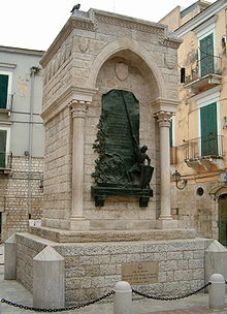
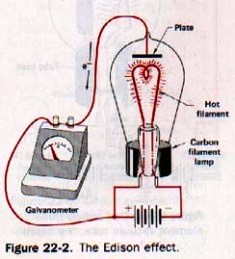
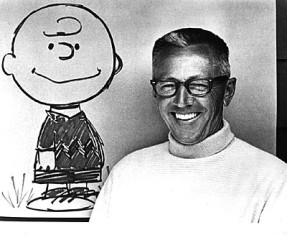
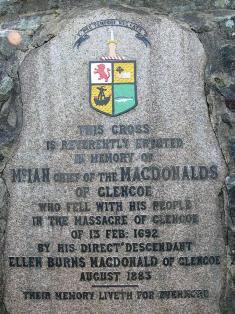
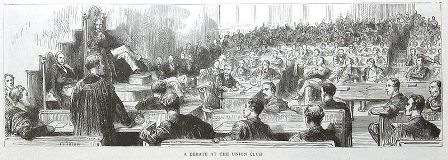
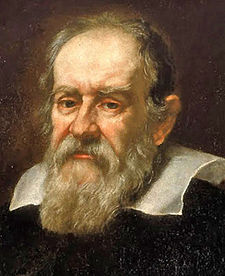
leave a comment